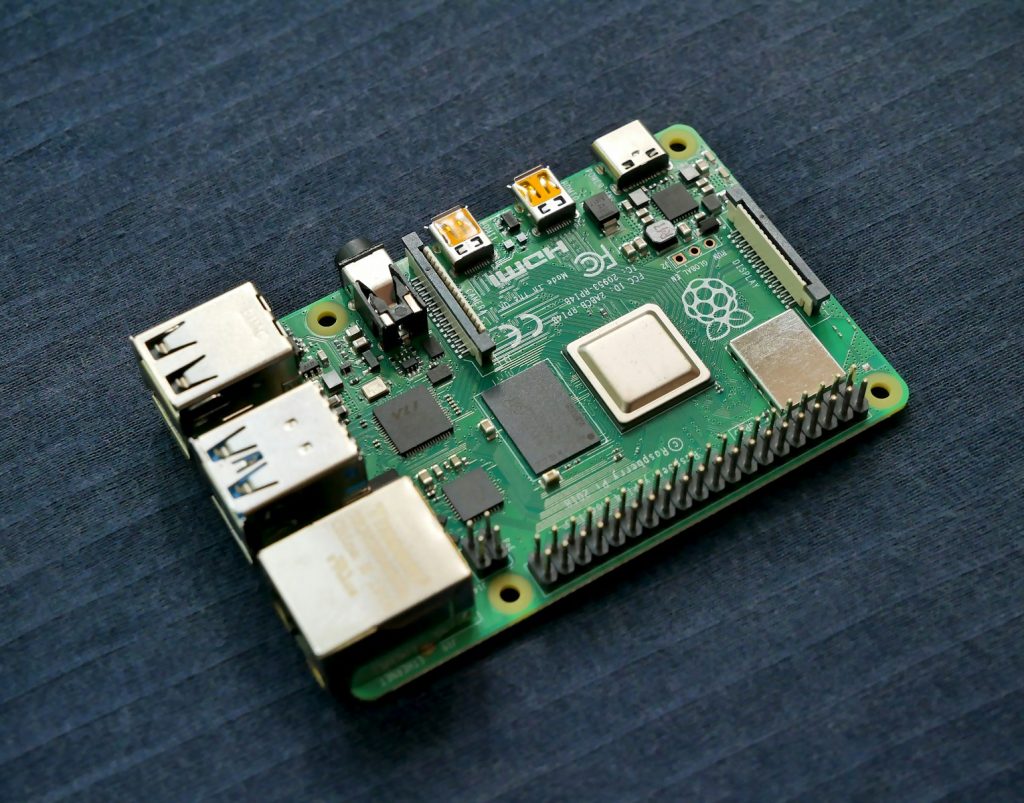Ethical hacking, a critical component in fortifying cybersecurity defenses, utilizes advanced tools and techniques to identify vulnerabilities before they can be exploited maliciously.
Remarkably, over 70% of cybersecurity professionals believe ethical hacking is crucial for a robust security strategy.
The Raspberry Pi, a compact and versatile computing platform, has proven especially effective in this domain due to its portability and capability to run Kali Linux, a powerful penetration testing toolset. This integration allows users to conduct thorough security assessments and improve protection against cyber threats efficiently.
As technology evolves, the demand for skilled ethical hackers is expected to rise, emphasizing the importance of hands-on, practical learning platforms like the Raspberry Pi.
Introduction
Ethical hacking is an essential practice in the cybersecurity domain, focusing on identifying and fixing vulnerabilities within computer systems and networks from a defensive perspective. The Raspberry Pi, a compact yet powerful computer, has emerged as a cost-effective tool for cybersecurity professionals and hobbyists alike. This small device is capable of running various Linux distributions, including the renowned Kali Linux, which is specifically tailored for penetration testing and security research. By integrating Kali Linux with Raspberry Pi, users gain access to a portable, versatile platform for conducting real-world security audits and ethical hacking exercises.
The appeal of using Raspberry Pi for ethical hacking lies not only in its affordability and portability but also in its capacity to support a broad array of hacking tools and scripts integral to Kali Linux. These tools are designed to simulate attacks on computer systems, allowing cybersecurity specialists to identify and rectify security flaws. This practice is crucial for enhancing the security posture of organizations and protecting sensitive data from potential breaches. Moreover, the Raspberry Pi can be customized with various peripherals, such as wireless adapters and GPIO pins, enabling it to handle complex security assessments.
Educational institutions and training programs have recognized the potential of Raspberry Pi to provide hands-on learning experiences in network security. Students can experiment with network setups and attack strategies in a controlled, ethical environment, which fosters a deeper understanding of cybersecurity mechanisms and countermeasures. Such practical exposure is invaluable for aspiring cybersecurity professionals, equipping them with the skills necessary to navigate the complexities of the modern digital landscape.
Furthermore, the Raspberry Pi community offers extensive support through online forums, tutorials, and projects, which significantly enriches the learning curve for users at all levels. By participating in this vibrant community, individuals can share insights, collaborate on projects, and stay updated on the latest developments in cybersecurity tools and practices. This community-driven approach not only enhances individual learning but also contributes to the broader field of cybersecurity by fostering a culture of knowledge sharing and innovation.
The use of Raspberry Pi for ethical hacking serves as a testament to the versatility and adaptability of open-source technology in addressing complex challenges in cybersecurity. By leveraging this powerful tool, individuals and organizations can enhance their ability to safeguard digital assets and contribute to the creation of a more secure cyber environment.

Setting Up Your Raspberry Pi for Ethical Hacking
Setting up a Raspberry Pi for ethical hacking involves several critical steps, beginning with the selection of appropriate hardware and installation of the operating system, specifically Kali Linux, renowned for its comprehensive suite of cybersecurity tools. Choosing the right model of Raspberry Pi is crucial; the Raspberry Pi 3 B+ or Raspberry Pi 4 is recommended due to their enhanced processing power and connectivity options, which are essential for handling complex penetration testing tasks. Additionally, securing compatible peripherals, such as a reliable microSD card (16GB or more is advisable), a power supply, and necessary interfaces, lays a strong foundation for building a capable hacking device.
The installation of Kali Linux on the Raspberry Pi marks a significant step in configuring the device for penetration testing. This process involves downloading the Kali Linux image tailored for the ARM architecture of the Raspberry Pi and using software like Etcher or Win32 Disk Imager to flash this image onto the microSD card. This step not only prepares the Raspberry Pi with the necessary tools and environments for ethical hacking but also transforms it into a portable and versatile testing unit. Users must ensure that they follow this procedure carefully to avoid common pitfalls such as improper image flashing or selection of an incompatible operating system version.
Once the operating system is installed, the initial boot-up of the Raspberry Pi with Kali Linux will require basic configurations such as setting up the default user account and ensuring network configurations are correctly established. These preliminary steps are crucial for securing the device and preparing it for remote operations, which are typical in penetration testing scenarios. Changing the default password and ensuring the network settings are secure are mandatory steps to protect the device from unauthorized access and potential security threats.
Additionally, configuring the Raspberry Pi to connect to various network interfaces and setting up essential services like SSH (Secure Shell) for remote access are vital. These configurations not only enhance the functionality of the Raspberry Pi as a hacking tool but also provide the flexibility to perform ethical hacking from different locations and environments. It is also advisable to update and upgrade the system regularly to keep the tools and the operating system current with the latest security patches and improvements.
In conclusion, setting up a Raspberry Pi for ethical hacking with Kali Linux is a meticulous process that requires attention to detail and a deep understanding of both hardware and software components. By following these steps, users can create a powerful and portable device capable of conducting thorough and effective cybersecurity assessments, which are essential in today’s digital age for maintaining the integrity and security of information systems.
Basic Configuration for Security and Networking
Once the Raspberry Pi is equipped with Kali Linux, the next crucial phase involves configuring it for enhanced security and efficient networking to support ethical hacking activities. The initial step in this configuration process is to secure the device by changing the default usernames and passwords, a fundamental practice that prevents unauthorized access. Given the vulnerabilities associated with default settings, this change not only fortifies the device’s security posture but also establishes a strong foundation for subsequent operations. Furthermore, updating and upgrading the system to patch known vulnerabilities is a critical measure that maintains the integrity of the hacking environment.
Configuring network settings appropriately is another vital step that ensures the Raspberry Pi can effectively communicate within various networks for penetration testing. This involves setting up Wi-Fi and Ethernet connections, adjusting IP settings, and ensuring reliable connectivity. For remote operations, enabling and configuring SSH access is imperative, allowing users to securely control the Raspberry Pi from a distance. This setup not only facilitates the flexibility required for mobile testing scenarios but also enhances the Raspberry Pi’s usability as a remote penetration testing tool.
To further secure the Raspberry Pi, users should also consider configuring firewalls and fail2ban, a tool that helps protect against brute force attacks. These security measures are crucial for defending the Raspberry Pi against attacks that could compromise the ethical hacking activities. Additionally, implementing regular security audits of the Raspberry Pi’s configuration and maintaining strict access controls are practices that sustain the security level necessary for ethical hacking tools.
Moreover, for effective ethical hacking, it is essential to ensure that all network tools and utilities are correctly configured. Tools such as Nmap for network scanning, Wireshark for packet analysis, and Metasploit for vulnerability exploitation require precise configuration to function optimally on the Raspberry Pi. Proper setup of these tools ensures that they deliver accurate results and operate efficiently during penetration testing sessions.
In summary, configuring a Raspberry Pi for security and networking in an ethical hacking context is a multifaceted process that involves securing the device, setting up robust network configurations, and ensuring that all penetration testing tools are optimally configured. These steps not only prepare the Raspberry Pi for effective and secure penetration testing but also contribute to the broader cybersecurity practices by maintaining a well-defended and reliable testing platform.

Tools and Techniques for Ethical Hacking with Raspberry Pi
When it comes to ethical hacking using a Raspberry Pi, mastering the array of tools and techniques available through Kali Linux is essential for conducting effective security assessments. The arsenal of tools provided by Kali Linux on Raspberry Pi enables users to simulate various cybersecurity attacks, identify vulnerabilities, and understand the defensive mechanisms required to protect systems. Tools such as Metasploit, for vulnerability exploitation, Wireshark for packet analysis, and Aircrack-ng for Wi-Fi security auditing, are fundamental for penetration testers looking to leverage the Raspberry Pi’s capabilities.
Each tool serves a unique purpose and requires detailed configuration to function effectively on the Raspberry Pi platform. For instance, Metasploit allows users to test system vulnerabilities by crafting and executing code against discovered weaknesses, while Wireshark provides deep insights into network traffic, enabling the identification of suspicious packet exchanges. Similarly, Aircrack-ng offers a suite of tools for assessing Wi-Fi network security, including capabilities for cracking Wi-Fi passwords and monitoring network traffic for vulnerabilities.
The techniques involved in deploying these tools are as critical as the tools themselves. For example, network scanning with Nmap involves sweeping a network to identify connected devices, open ports, and potential vulnerabilities. This technique is crucial for any preliminary assessment in penetration testing as it maps out the attack surface of a target network. Techniques for deploying Wireshark involve setting up the Raspberry Pi in a manner that can intercept and log traffic, which is vital for analyzing the flow of data across the network to spot potential threats.
Furthermore, integrating additional peripherals, such as external Wi-Fi adapters capable of packet injection, enhances the Raspberry Pi’s functionality as a hacking tool. These adapters expand the range of attacks the Raspberry Pi can perform, especially in wireless security testing where capabilities like monitor mode and packet injection are necessary. Such configurations allow ethical hackers to create a comprehensive testing setup that is both portable and effective, utilizing the Raspberry Pi to its full potential.
In summary, the combination of powerful tools and advanced techniques forms the cornerstone of using the Raspberry Pi for ethical hacking. By understanding how to effectively deploy tools like Metasploit, Wireshark, and Aircrack-ng, and mastering techniques such as network scanning and traffic analysis, cybersecurity professionals can turn the compact Raspberry Pi into a formidable tool for security testing. This capability not only enhances their toolkit but also provides a scalable and cost-effective solution for conducting thorough cybersecurity assessments.
Practical Projects and Scenarios
Practical projects and scenarios using the Raspberry Pi for ethical hacking provide invaluable hands-on experience, allowing users to apply theoretical knowledge in real-world settings. By engaging in these practical applications, ethical hackers can deepen their understanding of network security and refine their skills in identifying and mitigating vulnerabilities. One effective project is setting up a Wi-Fi penetration testing station using the Raspberry Pi, which includes tasks like monitoring network traffic, cracking Wi-Fi passwords, and even simulating network attacks in a controlled environment.
Another compelling scenario involves using the Raspberry Pi for network scanning and vulnerability assessment. By configuring the Raspberry Pi with tools like Nmap and Nessus, users can conduct thorough scans of network infrastructures to detect potential vulnerabilities and insecure configurations. This scenario teaches important aspects of cybersecurity, such as the identification of weak points in a network that could be exploited by malicious actors. The practical application of these tools on the Raspberry Pi helps users understand the nuances of network topologies and the importance of regular security assessments.
Web application testing is another practical scenario where the Raspberry Pi can be utilized effectively. With tools like Burp Suite and OWASP ZAP, the Raspberry Pi can be turned into a portable testing device for identifying security flaws in web applications. This scenario provides an excellent opportunity for users to learn about common web vulnerabilities, such as SQL injection and cross-site scripting, and to practice deploying countermeasures against such threats.
In addition to these projects, the Raspberry Pi can be used to simulate a hardware hacking environment where users can learn about interfacing with physical devices through the GPIO pins. This scenario could include projects like building a custom keylogger or creating a device that can interact with other hardware to test physical security measures. Such projects not only enhance technical skills but also encourage creative problem-solving and a deeper understanding of how hardware and software interact in the context of cybersecurity.
Finally, ethical hackers can use the Raspberry Pi to participate in capture-the-flag (CTF) competitions, which are excellent for testing skills under time constraints and against peers. These competitions often involve solving security puzzles or breaching virtual networks, which can be practiced using the Raspberry Pi setup. CTFs provide a gamified way to learn and apply hacking skills in a variety of security domains, making them a fun and educational activity for individuals looking to sharpen their penetration testing abilities.

Ethical Considerations and Legal Compliance
Ethical considerations and legal compliance are paramount in the practice of ethical hacking, particularly when employing tools as potent as those available on the Raspberry Pi. It’s crucial to operate within the bounds of the law and maintain a high standard of ethics to ensure that penetration testing and security assessments do not cross into illegal territory. Understanding the legal framework that governs cybersecurity activities, such as the Computer Fraud and Abuse Act in the U.S. or similar legislation in other countries, is essential for every ethical hacker.
Prior to initiating any penetration testing, ethical hackers must obtain explicit permission from the system owners. This is a fundamental legal requirement that protects both the tester and the organization from potential legal repercussions. Obtaining authorization involves documenting what tests are to be performed, the methods and tools that will be used, and the extent of the access granted. This documentation not only provides legal protection but also ensures clarity and transparency between all parties involved.
Beyond legal compliance, ethical hackers must adhere to a strict code of ethics that respects privacy, avoids data damage, and maintains confidentiality. For instance, during a penetration test, ethical hackers might come across sensitive personal information or proprietary data. It is their responsibility to handle such discoveries with utmost confidentiality and integrity, ensuring that no data is misused or unnecessarily exposed. Ethical hackers should also be committed to remediating and reporting vulnerabilities to help improve the overall security posture of the systems they test.
Moreover, ethical hackers should continually educate themselves on the evolving landscape of cybersecurity law and ethics. This continuous learning helps them stay updated on new regulations, emerging threats, and innovative defensive techniques. Participating in forums, attending conferences, and engaging with professional organizations are all beneficial practices that help maintain high ethical standards and legal awareness.
In conclusion, ethical hacking is a powerful tool for strengthening cybersecurity, but it requires a careful balance of technical skills, legal knowledge, and ethical conduct. By adhering to legal guidelines and ethical standards, users of Raspberry Pi for ethical hacking can ensure their efforts contribute positively to the security community without infringing on legal boundaries or ethical norms.
Conclusion
Throughout this exploration of ethical hacking using the Raspberry Pi, we’ve uncovered the versatility and power of this small device when paired with Kali Linux. From setting up the Raspberry Pi for security operations to deploying advanced penetration testing tools and techniques, it’s clear that this platform is an invaluable resource for cybersecurity professionals and enthusiasts alike. The integration of Raspberry Pi into ethical hacking not only democratizes access to powerful cybersecurity tools but also promotes a deeper understanding of network security principles.
The practical projects and scenarios discussed illustrate the Raspberry Pi’s capability to simulate real-world security challenges, providing a hands-on approach to learning and applying cybersecurity techniques. These experiences are crucial for developing the skills necessary to defend against and mitigate cyber threats effectively. Furthermore, the emphasis on ethical considerations and legal compliance reinforces the importance of responsible hacking practices, ensuring that these skills are used for enhancing digital security and not for harmful purposes.
As technology continues to evolve and cyber threats become more sophisticated, the role of ethical hackers will become increasingly important in safeguarding digital assets. The Raspberry Pi, with its affordability and adaptability, is an excellent tool for preparing the next generation of cybersecurity experts. By fostering an environment of continuous learning and ethical practices, we can look forward to a more secure digital future.
In conclusion, the Raspberry Pi is more than just a tool; it is a gateway to mastering cybersecurity. By embracing this technology, ethical hackers can enhance their skills, contribute to the security community, and help create a safer digital world.
Thank you for following along with this comprehensive guide on ethical hacking with the Raspberry Pi. Whether you’re a seasoned professional or a budding enthusiast, there’s always more to learn and explore in the field of cybersecurity.


